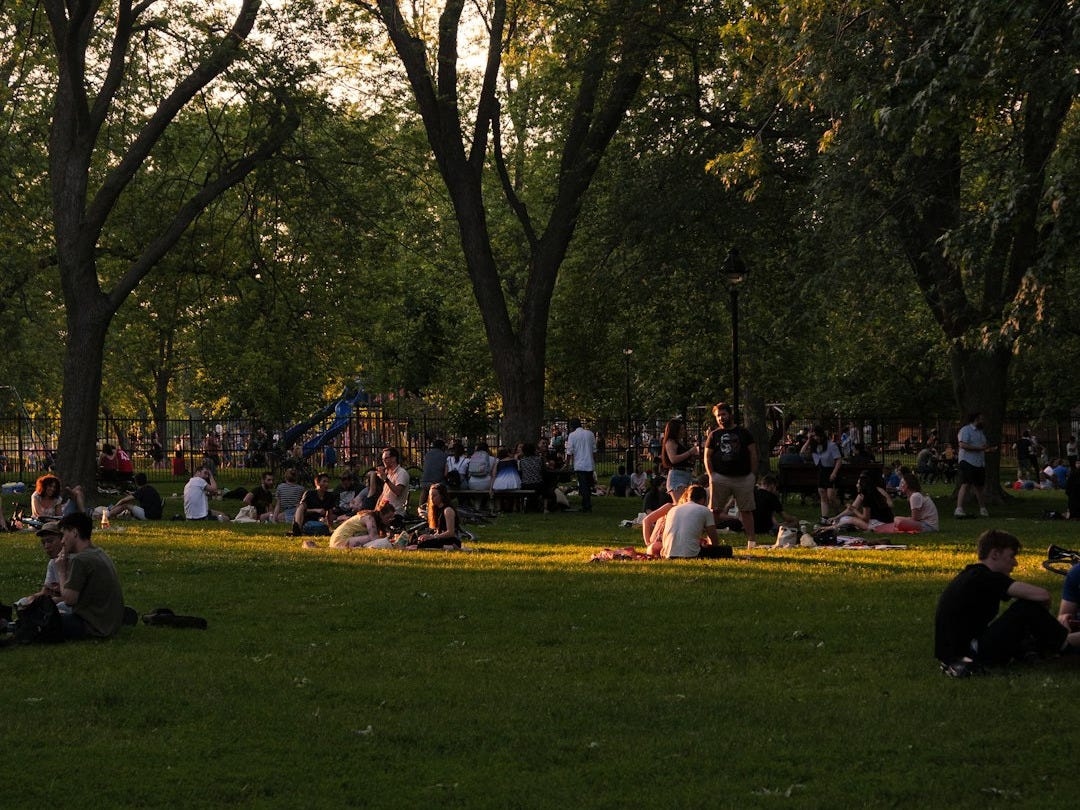Social Media as Teens' "Third Place"
The side-effects and how youth ministries can be part of the solution
As a teenager, did you have a third place that you frequented?
Let me back up and make sure we’re on the same page about what I’m asking. Sociologist Ray Oldenberg coined the term “third place” in 1989. It’s meant to refer to a place you might spend a lot of time. Your "first place” would be your home, your “second place” would be your school (or workplace in adulthood), and your “third place” would be a place you frequent that facilitates social interaction. Think of coffee shops, parks, churches, or Central Perk in the show Friends.

My friends and I often gathered at each other’s houses, but we also had some other third places where we would meet up. One was a local park, where we would often lay out blankets in the grass and chat or sing songs together. (Really, I would play guitar while my friends would sing, and most of the songs we sang were worship songs from youth group — we were the ideal youth group kids back in the day!) Another was often our youth group space at the church. Some of us elected to assist the youth leaders with projects (again, more evidence we were the ideal youth group kids) and were often there in the afternoon; on Wednesdays we would usually come early and leave late around our normal youth group gathering.
These spaces offered unstructured hang out time, which not only strengthened our relationships with each other, but allowed us to grow spiritually and socially and learn independence as teenagers before we left for college.
For today’s teenagers, social media and messaging apps are often the primary things that serves as a third place for them. In fact, multiple sources are noting that third places are fading in our culture, largely being replaced by online “places.” And for our teens, there are massive ramifications for this.
Where I had time and space to learn to navigate peer relationships in real time and in face-to-face situations, today’s teens are often interacting (outside of school) primarily in digital ways.
When your social interactions are happening in this way, you miss out on a lot of social and nonverbal cues, and as a result you also miss out on developing a lot of social skills. You may not learn to navigate socially awkward or tense situations. You may choose to never have hard conversations in person… and therefore not be sure how to do that at all.
When your social interactions are happening on digital devices, they are disconnected from embodied realities. Teens therefore are living in increasingly disembodied ways, especially in their relationships. For instance, embodied relational interaction means you get direct, immediate, face-to-face reactions. But when you’re just messaging a friend, you don’t get to see their facial expression or hear the tone of their voice. Instead, as you wait longer for their response, your nervousness may build up.
When your social interactions are largely disembodied and digital, and you aren’t used to navigating real in-person social interactions, you’re also much more likely to experience social anxiety. If digital interactions are already anxiety-inducing, after all, in-person interaction sounds much more threatening, since you can’t mask your reactions or lack of social skill as well.
Social media widely serving as a third place also connects with a loss of learning independence. When teens don’t go venturing out into embodied places on their own away from parents, they don’t learn how to do that.
Where I’ve seen youth ministries thrive, they have often been able to provide a third place for their students. Perhaps the youth space is open once a week after school to students, or students regularly come early and leave late on Sundays and Wednesdays. Often, the youth leaders make a regular practice of having groups of students join them at the church’s youth space.
In some ministries, having one central third place would be difficult, as some churches serve populations that are spread out over large metro areas. In these cases, the youth ministries may want to empower their leaders to connect with students in a number of other places — coffee shops, parks, etc. — that can serve as regular third places. Maybe every Tuesday afternoon, you show up at a coffee shop on the south side of town, and every Friday morning, you have breakfast with students on the west side of town before school.
In providing third places, youth groups can help their teens grow in important relational and spiritual ways. For, in order to thrive as a person and in their faith, teens need to be intimately connected not only to Jesus but also to embodied people around them.



